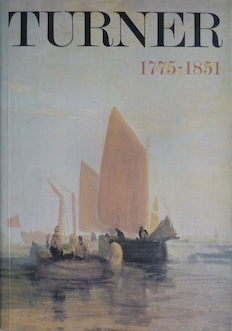|
16 XI 2024 |
4. Success at the Royal Academy 1801-12
078 - Venus and Adonis | |

| ||
|
Whereas ‘Jason’ shows Turner setting out to paint a picture in the manner of Salvator Rosa, these two paintings show him at his most Titianesque. The 'Holy Family' may have been inspired in general terms by Titian's 'Holy Family and a Shepherd', sold with the W. Y. Ottley collection in London in January 1801 and now in the National Gallery (see Cecil Gould, National Gallery Catalogues: The Sixteenth Century Venetian School, 1959, pp.97-8), while 'Venus and Adonis' owes a still closer debt to Titian's now destroyed 'St. Peter Martyr' altarpiece. This painting from SS. Giovanni e Paolo in Venice (where Turner was later, in 1819, to copy a detail of the foreground foliage and the Martyr's leg) had been looted by Napoleon and was seen by Turner in the Louvre during his visit in 1802; his notes on the picture cover three pages of the 'Studies in the Louvre' sketchbook (T.B.LXXII-28v, 28 and 27v). Well known in England already through engravings, Turner eulogised it in his 1811 lecture as Professor of Perspective at the R.A.: 'the highest honour that landscape has as yet, she received from the hand of Titian; . . . the triumph of Landscape may be safely said to exist in his divine picture of St. Peter Martyr' (see Jerold Ziff ‘"Backgrounds, Introduction of Architecture and Landscape": A Lecture by J. M. W. Turner', in Journal of the Warburg and Courtauld Institutes, XXVI, 1963, p. 135). Turner's work on the two pictures was indeed connected. A drawing in the 'Calais Pier' sketchbook shows the Holy Family in the setting, complete with flying putti above, of the Titian 'Peter Martyr’ (T.B.LXXXI-63, repr. with both the Turners under discussion and Martino Rota's engraving after the Titian, by Gage 1969, pls.61-4; see also LXXXI-62). However, Turner decided on an oblong format, close even in size to the Ottley Titian, apparently following another drawing in the 'Calais Pier' sketchbook (T.B.LXXXI-60; there are further related drawings on IXXXI-44 and 47). The 'St. Peter Martyr' setting he then used for 'Venus and Adonis', dateable for stylistic reasons to c.1803-5. The serpent that slides away on the right of the Holy Family' is presumably a traditional allusion to the Redeemer striking the serpent's head, though Gage also finds a connection with the confrontation of 'Apollo and the Python' (Tate Gallery 488, exhibited by Turner at the Academy in 1811 (81) but almost certainly painted c. 1803-5, there also being sketches for this composition in the 'Calais Pier' sketchbook) and the nature symbolism of Jacob Boehme (op. cit., pp.13940). The 'Holy Family' was not well received in the press. The True Briton for 6 May, attacking the figures, concluded that 'unless the artist can produce something better, we advise him to take an eternal farewell of History', and the British Press, for 9 May, while noting 'a bold and daring effort', agreed with a man of great taste, that Mr. Turner has . .. spoilt a fine landscape by very bad figures’. 'Venus and Adonis' was not exhibited by Turner until in 1849 he borrowed it back from its then owner, his friend and patron H. A. J. Munro of Novar, together with the 'Wreck Buoy' (now in the Walker Art Gallery, Liverpool) for his contribution to that year's exhibition. Unlike 'The Wreck Buoy' which was completely repainted, 'Venus and Adonis' was left in its early state. It had earlier belonged to John Green, 'the well-known amateur of Blackheath', before being bought in 1830 by Munro at Christie's for 83 guineas, the price apparently having been bid up by a 'ruddy-cheeked butcher's boy' acting for Turner. When ‘Venus and Adonis' was exhibited in 1849 the Art Union for June 1849 described it as 'A work that will bear comparison with the best of its class that ever emanated from the Venetian school'. 'Who would say that this picture was executed by the same hand, as, for instance, the other in the exhibition or even those all-beautiful Venetian subjects'. The Athenaeum, 12 May, spoke of the 'mythological theme, which, having been painted by Titian and sung by Shakespeare, has lost none of its beauty on Mr. Turner's canvas. It is full of fancy and of feeling'. The Spectator for 12 May, on the other hand, called it 'a strange work by Mr. Turner who does not wish us to forget that he can't paint the human form.' An image generated by an AI Machine Learning Model Property of the artist. | ||
